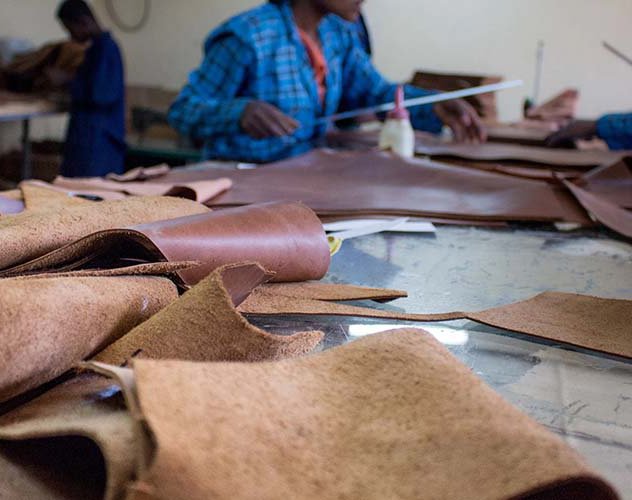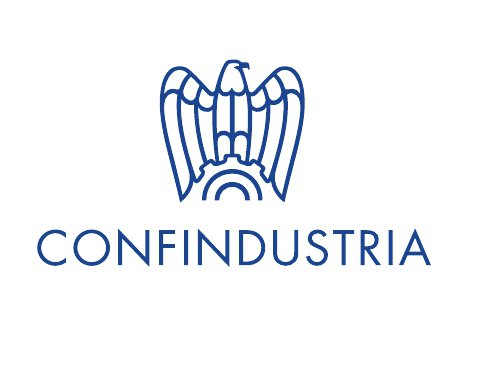The apogee of Ethiopia’s livestock reserve is yet to translate into anything more than a disappointing cliché. The leather industry that feeds on the country’s livestock resources is being tied up with old challenges of poor bureaucracy, lack of finance, and market linkage issues. Adding salt to the wound, the Covid pandemic, instability, and recent removal of Ethiopia from the African Growth Opportunity Act (AGOA) are making the industry’s future look rather bleak. Recognizing the industry’s immense potential and resolving its challenges is an assignment for no tomorrow, write EBR’s Lidya Tesfaye and Bamlak Fekadu, as reported by Satenaw.
As the 2021/22 fiscal year is halfway through, so should be the accomplishment of goals set by organizations, companies, and institutions at the year’s start. Unfortunately, that has not been the case for the Ethiopian Leather Industry Development Institute (LIDI) and the sector it stands for. Based on the current financial year’s mid-year report which the institute released, it oversaw only USD21.59 million from exports. Plans for the full year are USD90 million and projections show less than half will be attained.
Half a decade ago, export numbers had been much better. In the 2016/17 fiscal year, Ethiopia earned USD140 million from the export of leather and leather products—the largest known figure in the industry’s history. But since the pandemic, revenue has been on a free fall.
In 2019, the Ethiopian Chamber of Commerce and Sectoral Association (ECCSA) reported that the sector contributes, on average, about 6 to 8Pct of the gross product value of all manufacturing industries while contributing about 6Pct to the national GDP.
With a huge livestock population and abundant workforce, Ethiopia has a potent potential for leather and leather products export. Businessmen like Samson Getahun recognize this potential despite the usual challenges that hinder him and colleagues from making the best out of the nation’s abundance. Samson is a startup exporter in the leather industry. Having launched his business six years ago, he has already started exporting leather products to African countries. Despite old, new, and very recent challenges of the pandemic and instability, the industry is still filled with opportunities.
“We hope the government will enhance its commitment and amend policies so that we can make the best out of the abundant raw material and workforce the country possesses,” Samson said. “There is no doubt that Ethiopian leather is preferable on the international market.”
Globally, the leather manufacturing industry is one of the oldest and is known to intensively engage a high number of workers. Ethiopia’s leather industry is around 90 years old, with Asko Tannery among the first players in the sector. Though it has been showing progress year by year since its early days, its development is not as it should have been. Currently, Ethiopia is mainly exporting finished leather followed by an ever-growing number of shoe exports. Moreover, Ethiopia allows duty free import of all raw materials—even including leather—for export manufacturers.
Today, in the Merkato district of Addis Ababa, a huge marketplace exists for shoemakers serving the domestic market with wholesale shops dealing in leather, soles, accessories, and shoes. At the same time, a number of factories are active that produce shoes for foreign markets, including Sole Rebels, Oliberté, and Enzi on the fashionable end and Huajian, George Shoe, and others with mass production.
According to ECCSA, in 2019, there were 22 medium and large-scale footwear manufacturers with a capacity of 12 million pairs per annum. Of this, 3.54 million pairs were exported to the international market with 91Pct of that through FDIs.
Other items like gloves, bags, and small leather articles also have large potential for exponential growth especially owing to the quality and unique characteristics of Ethiopian sheep and goat skin. Such growth was exhibited in 2010/11 after the Ethiopian government discouraged the export of hides and skins to increase the export of value-added products by tanners and other industry players. It placed a 150Pct export tax on wet blue and pickled leather—semi-processed and sellable items in the production process—hoping to secure enough raw material supply for the industry.
Birhanu Serjebo, Corporate Communication Director of LIDI, remembers the time well. It was after the government’s decision to discourage the export of hides and skins that investors started to come on board. However, 70Pct of raw cattle hide still leaves the nation on contraband routes, primarily through the eastern borders of the nation. The illegal trade is primarily to blame for the short supply of skin and hides. Factories are now forced to pay ETB90 per sheep skin while cattle hide goes for over ETB200. Stakeholders have tried to introduce a linkage scheme forcing slaughterhouses to deliver raw skin and hide directly to assigned factories.
The establishment of LIDI in 1991 has played an upside role in the industry’s prospects. The work it had been doing previously was under the auspices of the Ministry of Industry. However, it was after 1997 that things got better, according to Birhanu. It was in this time where the construction of model factories, imports of different types of machinery, and stronger relations amongst different factories brought positive and visible changes.
Assefa Getnet, Chemist and Owner of Diamond Leather, joined the sector after the establishment of LIDI. It has now been 15 years and his company exports finished leather products to France and the US, in addition to local market sales. He acknowledges that sticking to the industry with all its challenges has rewarded him over the years, while urging the government to prioritize the sector in its strategies and policies as it is one with immense potential.
“We all need to be aware that this is a country endowed with 100 million heads of diversified livestock,” Assefa points out.
The industry is wrecked by a series of challenges, however. Licensing and finding the right market for products challenges businesses right from the start and throughout their entire lifetime. “The bureaucracy doesn’t seem to understand that the international market doesn’t just sit around and wait for us,” Samson told EBR.
Finance has also been a challenge that Samson faced during the initial stages of his business. What is told of governmental support for leather exporters and the reality on the ground are far off, according to Samson. Yet, he still believes it is never too late to make changes and make the industry live up to its full potential.
In the Ethiopian market, which is not to be underestimated, awareness among the society in buying local leather products is still in its infancy. Communities that lead their everyday life with their cattle do not also recognize the resource they have at hand. Such understanding could have contributed to better quality raw material. The lack of awareness also extends to skin and hide collectors. These collectors do not take their job beyond their daily income. The understanding is not such that collecting hide and skin is a matter of the country’s forex reserve and national image. It is all left to the mercy of undisciplined and illegal operators.
Lack of quality diminishes foreign currency earnings and also local sales of leather articles. “The public chooses imported leather products which are made of synthetic leather,” Assefa complains. “We have products made of quality leather here; yet, the public is yet to recognize that.”
The lack of awareness does not just stop there. Manufacturers and exporters have little knowledge of how they should work on their brands. Branding is as important as collecting raw material and product processing. Marketing and promotion knowledge and expertise has a long way to go on the side of manufacturers and exporters.
The conflict in northern Ethiopia and instabilities in other parts of the country have also severely affected the industry. It has been more than a year since tanneries and shoe factories around Mekelle and the State of Tigray have altogether stopped production. Tanneries in Bahir Dar and northern Amhara have been closed for months now with some looted and destroyed by warring actors.
Further bad news kicked in when the US government announced the removal of Ethiopia from the beneficiary list of the African Growth and Opportunity Act (AGOA), effective January 1, 2022. As much as authorities have tried to downplay the impact, Birhanu is well aware of the potential downside upon the sector.
“It is obvious that it will have a negative impact; 60 to 70Pct of finished leather and leather products were exported to the US,” Birhanu told EBR.
More than 75 domestic and foreign leather and leather product factories have invested in Ethiopia. Tanneries, which were just few just a decade ago, have now reached 29. There are also 21 medium- and large-scale footwear manufacturers.
Furthermore, about 400 small and micro enterprises and a huge number of small workshops are operating in the leather and leather goods sector in the country.
There is no denying the potential that the industry possesses. Putting in place the right resolutions to solve some of the industry’s long-term challenges has taken long enough to presume the industry might be taken for granted. Whether the right medicine, or even diagnosis, has been ascertained, is up for debate. But the longevity of problems doesn’t bode well for past and current regimes. The administration must consider the enabling of tanneries where there is abundant livestock. Cutting down quality compromised during transportation must be given priority.
Naive nationalist rhetoric that keeps downplaying the impact of the removal from AGOA might further cost the industry. Government officials, their so-called independent advisers, and political opponents offering opinions must urge the need to look for alternative markets. Asian, Middle Eastern, and regional markets offer long and short-term paths out of the dilemma. Studies also recommend the government organize investors in clusters. This recommendation has been presented to the government and is awaiting a decision.
Training and licensing hide and skin collectors could solve the ignorance and carelessness towards the invaluable resource. Awareness to communities to take good care of the cattle they own would also help. The public also has a stake in the success of the leather industry.
All said and done, one cannot stress enough the need to stabilize the country for any business to operate.
There are bright spots evidenced by producers like Ker Ezhi Ethiopia Leather Manufacturing which are exhibiting the undeniable potential of Ethiopian leather. Through innovative branding and marketing as well as good design and craftsmanship, the company whose name translates from the Gurage language as ‘watch something good’ is becoming popular locally and abroad. Its bags go for an average price of USD200.
Also, after delays of several years, the Industrial Park Development Corporation (IPDC) took the 290 hectares of land which housed the ‘Modjo Leather Hub,’ a LIDI project in Modjo town 30 kms from Addis Ababa which was planned to aid the take-off of the sector. IPDC now plans an investment of USD200 million to realize the state-of-the-art project full with treatment plants and create job opportunities for over 30,000 citizens.



